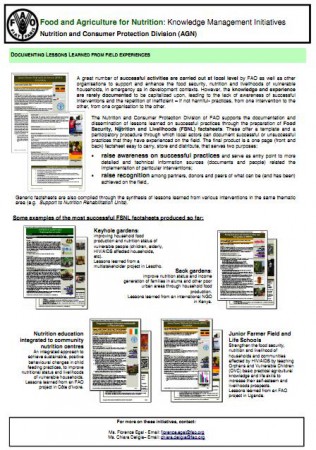- Livestock diversity in the hands of FAO. No comment.
- Let them eat fruit!
- AoB breaks down International Botanical Congress 18 for us.
- Species-poor tree plantations could be good for conservation of rare tree found in remnant forest patches in Chile because they encourage pollinators to move on. Agriculture, on other hand, is bad because it lures generalist pollinators into staying. Nature, don’t you just love it?
- Climate-proofing the Solomon Islands to include “the isolation of crop species tolerant of high salinity, high rainfall, and drought.” Strewth.
- Marine diversity. (Only kidding.)
- Good advice on home seed saving from Suzanne Ashworth. She wrote the (a?) book.
Using data to inform nutrition security policy
You only have a few more weeks to get your abstract in for the “International Scientific Symposium on Food & Nutrition Security Information: From valid measurement to effective decision-making” early next year. I like the sound of it. Here are the three topic areas:
1. Measuring and analyzing food and nutrition security to improve the availability and quality of information for decision making — advances made since the 2002 International Scientific Symposium.
2. Impact evaluation — understanding what works in humanitarian and development contexts to improve food and nutrition insecurity.
3. Food and nutrition security information — from evidence to policy impact.
Plenty of opportunities for agricultural biodiversity to make an appearance. I hope.
Never too late to link to old(ish) FAO nutrition factsheets
 I’m ashamed to say I knew nothing about these rather nice-looking Food Security, Nutrition and Livelihoods (FSNL) factsheets from FAO. Until I came across a tweet today from a “social media enthusiast,” that is. Thanks, Gauri.
I’m ashamed to say I knew nothing about these rather nice-looking Food Security, Nutrition and Livelihoods (FSNL) factsheets from FAO. Until I came across a tweet today from a “social media enthusiast,” that is. Thanks, Gauri.
Nibbles: Fish, Veggies, Fruit
- Sturgeon being farmed in Vietnam. What could possibly go wrong?
- Ghanaians eating all their greens to fight malnutrition.
- ICRAF goes to town on fruit trees. Well, I call that a pretty balanced and nutritious meal so far.
Brainfood: Pollinators, Cattle foraging, Sweet potato-pig system, Kava quality, Pastures, Pollen flow, Agrarian reform, Genotype diversity, Cacao cropping, Outcrossing
- Contribution of pollinator-mediated crops to nutrients in the human food supply. 90% of Vitamin C for a start.
- Foraging behavior of Alberes cattle in a Mediterranean forest ecosystem. It’s a semi-feral breed in NE Spain and its foraging behaviour may well decrease the risk of fires.
- Assessing the impact of the SASA/CASREN technology interventions in the sweet potato-pig production systems in Zitong County (Sichuan, China). All well and good but in this day and age one would expect some exploration of the sustainability of the interventions.
- Proposal for a Kava Quality Standardization Code. Very much needed because poor quality was probably responsible for examples of liver toxicity in the past. This is how to avoid that in the future.
- Clipping stimulates productivity but not diversity in improved and semi-natural pastures in temperate Japan. Semi-natural pastures are more diverse than improved pastures, and can be reasonably productive. So there.
- Pollen flows within and between rice and millet fields in relation to farmer variety development in The Gambia. Depends on breeding system. Likely higher within fields than between. Still no cure for cancer.
- Land, landlords and sustainable livelihoods: The impact of agrarian reform on a coconut hacienda in the Philippines. It seems to be mainly in the mind.
- Genetic divergence is not the same as phenotypic divergence. It isn’t? I’ll alert the media.
- Scope economies and technical efficiency of cocoa agroforesty systems in Ghana. Multi-crop cocoa farms are better, in multiple ways.
- Gene flow increases fitness at the warm edge of a species’ range. Outcrossing between edge populations better for living on the edge than outcrossing within edge populations, outcrossing with a center population or selfing. For a Californian annual anyway. Interesting consequences for in situ CWR conservation, in particular in context of re-introductions. Do we worry too much about “genetic pollution”?